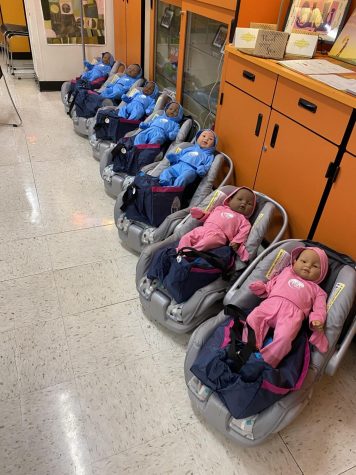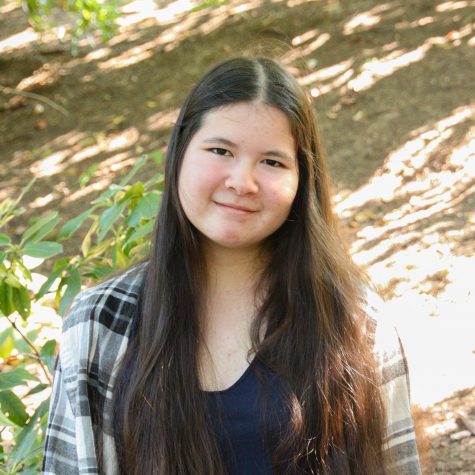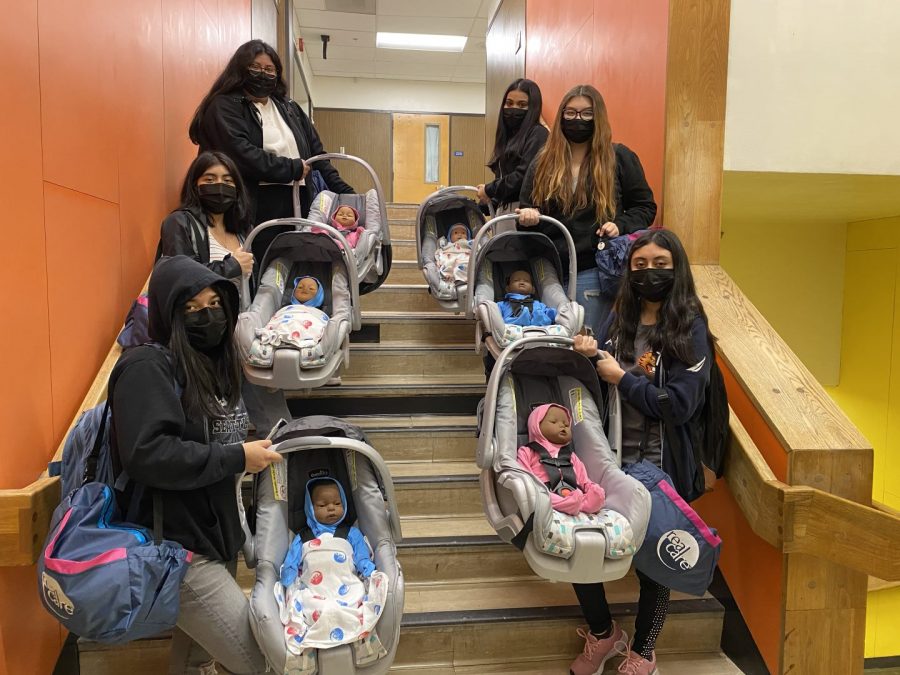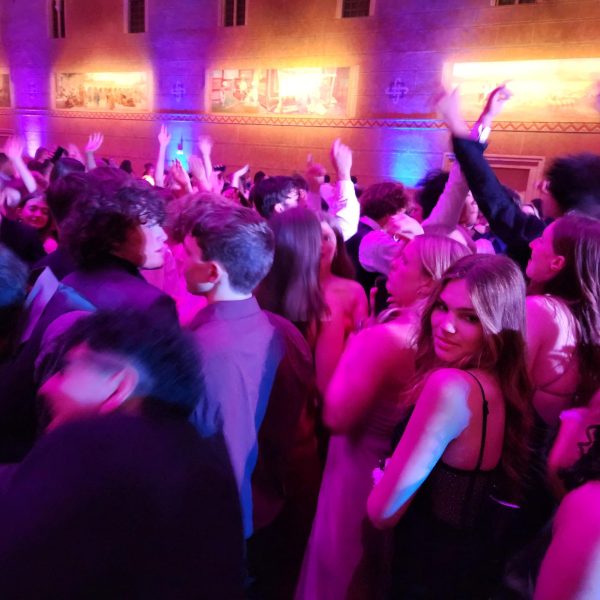Education Pathway students dabble in parenting with baby simulators
In early December, some Child Development 3 students brought realistic baby simulators home over the weekend.
Earlier this month, students in Beaverton High School’s Education Pathway got a taste of parenting through ten Real Care Baby Simulators. As they were purchased in 2018-19—the first year of the pathway’s existence—this year’s Child Development 3 students used the baby simulators for the first time. Child Development 2 students will have the same experience next semester.
“I am thrilled that my students are able to have this opportunity at such a young age,” said teacher Shelly Scott. “I believe that learning about pregnancy, prenatal development, and what it takes to care for a baby will serve them well in any future career working with children, as well as having the knowledge of what it takes to be a loving and nurturing parent.”
The Real Care Baby Simulators were introduced to help teach about pregnancy and prenatal development. “We also learn about infant health and safety issues like safe sleep for an infant, shaken baby syndrome, baby blues and postpartum depression and safety proofing a room or home environment,” Scott said.
In class, students learned how to take care of the baby simulators, which are far more complex than they appear to be at first glance.
“The babies have electronic components that monitor and record how long it takes a student to provide care for the baby, how often the baby’s outfits were changed, how long a baby sat in a car seat, and even the temperature of the baby,” Scott said.
A baby can also recognize a “mishandling” if its head and neck are not supported, and if it is shaken too vigorously, the baby shuts down permanently due to shaken baby syndrome.

Those who wanted to take the topic a step further could take a baby home over the weekend. Though they looked forward to the experience, it came with a side of nervosity.
“I was really excited to be able to get a feel for taking care of a baby and see how I would handle it,” said Yuridia Paz-Merino, a junior. “I was also a bit worried that I would hold the baby wrong or not take care of it properly.”
Despite their worries, there were enjoyable moments during the 48 hours students had with the simulators.
“My favorite part of the simulator was when I was probably feeding my baby and rocking him. It was comforting in a way,” said junior Johanna Leyte.
Scott encouraged her students to take their babies out to restaurants, shops, or on walks. Some even met up on playdates. Senior Lacie Luedtke, who named her baby Oakley, drank it all in.
“I took the baby out grocery shopping with my boyfriend and we carried it around, and it was amazing to just hold it and take care of him!” she said.
Balancing out these positives were some downsides. Most notable was the lack of sleep: juniors Moises Perez and Ashley Herrera Sanchez found that “waking up in the middle of the night” to soothe a crying baby was the most difficult part.
“I would get woken up around three in the morning to either feed, rock, or change my baby’s diaper,” said Paz-Merino. “It was also challenging leaving the baby for any moment because I would worry that my baby would cry when I went to the bathroom or shower.”
She also found it hard to find time to eat. “I would sit down and all of a sudden the baby would start crying.”
Like with a real child, there wasn’t an instant fix for a crying baby, leaving some students scrambling to help. “It was somewhat stressful to figure out what he needed and how to provide what he wanted,” said Leyte.
The babies’ programming eased parts of the weekend. Students could set up to three “quiet times” to allow them to work, study, or attend to other obligations. Outside of these times, the baby would cry, coo, burp, or cough as usual.
Scott believes the opportunity is invaluable. “Students learn that they have to be selfless, patient and have to put another person’s needs before everything else in their lives at any given moment,” she said, though she recognizes that students’ experiences are mixed.
“While some students may have a great experience caring for the babies over the weekend, others come to the realization that caring for a baby is much harder than it looks,” she said. “The lack of sleep, privacy and time often does not fare well with a busy teen’s life. In the end, most students come to the realization that they are not ready to be parents any time soon.”
Many students felt that the experience was enjoyable and that it provided a good representation of parenthood, even if it wasn’t completely accurate.
“The baby really only slept and cried when it wanted to be burped, fed, rocked, or changed,” said Paz-Merino. “A real baby would definitely be much more of a struggle because you have to care more for them, interact with them, and help with their milestones.”
Though the simulators were limited, they still confirmed some students’ thoughts on parenting.
“For now, I honestly don’t want any kids. Being a parent is exactly how I imagined—not easy—so it honestly depends when and how mentally and physically you are able to take care of a child,” said Herrera Sanchez.
However, she would take care of the simulator again if given the opportunity. “The more experience I have, the more I’m able to learn.”
It seems the baby simulators will go far at Beaverton’s Education Pathway.
“I wish we got to keep the baby all week and not just for the weekend,” Luedtke said. “I loved everything about it and I really did grow a connection with the baby even though it was fake.”

Anouk is a senior who writes and edits articles, takes the occasional photo, and helps everything run in the background.





![District changes have led to restrictions on AP classes for underclassmen [Graphic made with Canva].](https://beavertonhummer.com/wp-content/uploads/2024/06/Comic-Bonanza-600x600.png)

